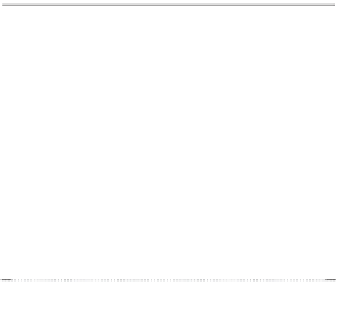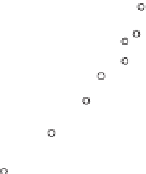Chemistry Reference
In-Depth Information
1.2
11.9%
1.0
0.8
7.8%
0.6
6.9%
0.4
2.7%
0.2
0.0%
0.0
0.4
0.5
0.6
0.7
0.8
0.9
α
-1
Figure 9.5:
Stress-strain isotherms for PDMS networks reinforced with in situ-generated titania
particles.
116
Each curve is labeled with the wt % of filler. The filled circles locate results
used to test for reversibility.
Some fillers (e.g., TiO
2
) do give stress-strain isotherms that are revers-
ible, indicating interesting differences in surface chemistry, including in-
creased ability of the chains to slide along the particle surfaces.
116
Figure
9.5 illustrates such results.
116
Nevertheless, the bonding of PDMS to silica,
titania, or silica-titania mixed oxide particles is strong enough to suppress
swelling
of the polymer (figure 9.6) These results involve equilibrium
1.8
Non-adhering
filler
1.4
1.0
0.6
0.2
0.0
0.1
0.2
/(1-
)
Figure 9.6:
Plot of volume fraction ratio V
ro
/V
rf
characterizing the swelling of an unfilled PDMS net-
work relative to that of a filled PDMS network, against filler loading. ϕ is the volume
fraction of filler.118
118
Bonding of PDMS to the oxide particles is strong enough to suppress
swelling of the polymer. Types of filler were silica-titania mixed oxides (◻ ), silica (O), and
titania (∆).









































